#but the exploitation of otherworldly magic comes with consequences
Note
When I’m trying to create new characters, I often find questionnaires that have questions like “what is your character’s favorite movie?” Or “What is their favorite social media app and why?” However, these questions do not work for creating fantasy characters (like I am). Do you have any ideas for questions to help writers create fantasy characters?
This is a fantastic question, especially for fantasy writers. There aren't many resources dedicated to the creation and development of fantasy characters. I highly recommend exploring Dungeons & Dragons (DND) questions; they can offer valuable insights like this one.
On that note, if you'd be interested in a customized workbook solely focused on fantasy character creation, just give me a heads-up! Meanwhile, I've crafted a concise yet distinctive short questionnaire to get you started. (With unique questions, not the basics.)
Magical Essence 🌟✨:
Source of Power: 🌀💫 What magical abilities or powers does your character possess? How did they acquire or inherit these powers?
Magical Affinity: 🌊🔥 Describe their connection to elemental forces or magical domains. Are they aligned with specific elements or forces of nature?
Otherworldly Origin 🌌🔮:
Realm of Origin: 🏰🌌 Where does your character come from? Describe their homeland or origin realm—its landscapes, cultures, and inhabitants.
Mythical Lineage: 👑🌟 Does your character hail from a line of legendary beings, gods, or creatures of ancient lore? How does this lineage influence their identity?
Legendary Quests and Adventures 🗡️🛡️:
Heroic Exploits: 🏹⚔️ What legendary quests or adventures has your character undertaken? Describe their valorous deeds and encounters with mythical creatures or foes.
Artifacts and Relics: 🏆🔮 Have they encountered or possess legendary artifacts or relics? How do these items influence or aid their journey?
Creatures and Companions 🐉🦄:
Familiar or Animal Companion: 🐾🔍 Does your character have a magical creature companion or a familiar? Describe this bond and its significance.
Encounters with Mythical Beings: 🧜♀️👻 Have they interacted with beings like dragons, spirits, or mythical entities? Describe these encounters and their impact.
Destiny and Prophecies 🌟🔮:
Foretold Prophecies: 🔍📜 Is there a prophecy or destiny foretold about your character? How do they perceive and react to this prophecy?
Chosen One or Fate's Hand: 👑🌌 Is your character considered a chosen one or fated to fulfill a significant role in the world's destiny? How do they handle this responsibility?
Interactions with Magic and Society 🤝🔮:
Attitude Towards Magic: 🧙♂️🔑 How does your character view magic in their world? Are they a skeptic, a practitioner, or a scholar of magic?
Relationship with Magical Societies: 🏰🌐 Are they part of magical societies, guilds, or orders? How do these affiliations shape their actions and beliefs?
Struggles and Sacrifices 💔🌪️:
Internal Conflict: 🤔💔 What inner struggles or conflicts does your character face? Are there conflicts between their desires, duties, or moral beliefs?
Sacrifices Made: ⚖️💔 Have they made sacrifices or endured hardships in their journey? What are these sacrifices, and how do they impact their character development?
Fate and Free Will 🎭🌌:
Control Over Destiny: 🌟🔗 Do they believe in free will, or do they feel their destiny is preordained? How does this belief affect their actions and decisions?
Choices and Consequences: 🤷♀️🔮 How do their choices influence the world around them? Describe instances where their decisions had profound consequences.
I hope these questions help you start thinking about your story and your character. I mentioned things like dragons and magic to give you a place to begin, but you can totally explore other ideas beyond typical fantasy themes. Use these questions to spark new thoughts for your plot and character development, leading you to create a story that's unique and goes beyond the usual fantasy clichés.
#creative writing#thewriteadviceforwriters#writing#writeblr#on writing#writing tips#writers block#how to write#writers and poets
88 notes
·
View notes
Text
The Cuphead show could teach Hazbin a helluva lot
First of all, I implore anyone who hasn't watched cuphead or didn't finish it to complete it. It is a complete story and it complements its origin, the game, only stepping away a little to expand on it.
Hazbin, watch the pilot if you haven't or rewatch it, a number of things fall off bytime the series comes about. New isn't bad but the pilot was so loaded and it's rather apparent that it is part of the cannon in how we start off as if we already know these characters. So what we can bring forward and what is no longer cannon? Has there been a time skip?
*spoilers ahead*
The story
A simple story of two humble individuals constantly having to swerve the devils attempts to take a soul he swindled fair and square.

They have many run ins and we meet numberours other comical yet sinister opponents along the way.
Sweet rich girl uses her powers for good. She aims to help the disadvantaged and targeted sinner group by opening a hotel to rehabilitate and redeem them to be heaven worthy.
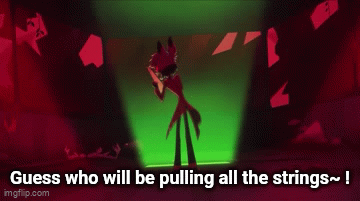
Charlie has allies but plenty of others don't care for her plans and motives are generally unclear.
The main characters
Cuphead and Mugman, two brothers of ambiguous age who live modestly with an elder in a cottage in he woods. They simply get on with their lives, no goal.
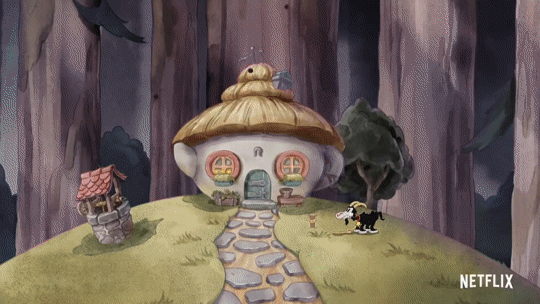
Cup head is immature and foolish, his antics generally land them in danger, Mugman is the more sensible but still chill, not quite babysitter sidekick, someone who could be living trouble free if they weren't dragged into the others havoc, simple association brings unwanted situations and people their way, even when chilling at home.
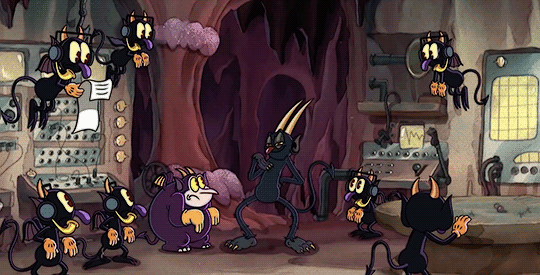
We are also introduced to the devil himself, who is silly, fun and clearly a whole otherworldly entity in not only abilities but personality and actions. As amusing as his actions are, he does cruel things to people minding their business and enjoys it, he openly exploited his oblivious patrons at the amusement park, before going on to expand business and create the known casino. He has a workforce who we see working. The devil collects souls, a consequence of this is that it makes monsters out of mortals, this is a business, however this business is regulated and dispite how powerful the devil is, he still has to answer to accounts. He can be subdued with magic but ultimately, hell and earth are his playground and aside from the auditor, he answers to no peers or superiors and feels no bitterness or discomfort regarding his home and role, his struggle is simply that one that got away and keeps eluding him. His backstory being irrelevant fits with the quick pace and slapstick, however the latest addition to the game may hint at some mysterious backstory in his bonus boss fight.
Charlie, a youthful woman of ambiguous is the princess of hell and owner of the Hazbin hotel. We don't see much running of a hotel. Charlie is nice, default nice because plot tells us she's helping and cares and she clearly isn't horrible. Charlie wants to help sinners.

First portrayed as hardworking but ill prepared, out of touch hustler, Charlie is now well intentioned, immature dreamer but this doesn't result in trouble, her carelessness doesn't get portrayed as selfish or irritating. Charlie personally has little to lose in her discision making, such as welcoming Alastor, Charlie can have what she wants because everything is set up for her and what she doesn't have is easily in reach, the meeting in heaven attained by guilt tripping her dad being a prime example, but she's not a spoilt brat.

Charlie's other half is Vaggie, her girlfriend who we have to be explicitly told is so if you don't follow the fandom, they have known eachother for years yet Charlie hardly knows Vaggie. Vaggie's degree of interest in Charlie's dreams is unknown, even after her big revelation we still have nothing to show that she's not just the sensible sidekick managing the lead characters silliness.

Not a main but someone very significant, Lucifer, the devil himself and Charlie's dad. He is all powerful, the leader of hell and the one who created this realm, however he is a goofy awkward dad who doesn't appear to be any leader and he hates to the degree of allowing mass slaughter the very people Charlie loves. None of this is an issue. He clearly has or had peers or superiors, he still meets with the angels who serve as the adversaries, with no issue, but this doesn't matter.
The tragic characters
Ms Chalace had it thought throughout life yet tried had to work her way up, she died unexpectedly, nobody cared, she got a second chance to be amongst the living but it comes at a price. Chalice is a charming hustler and entertainer.
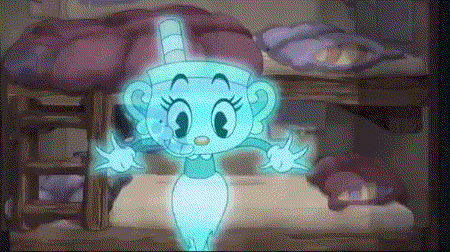
In Hazbin, it's everyone, everyone is given trauma, even privileged Charlie who could have been a great spoilt sweet character now didn't have the nice nuclear family upbringing, supportive mother who has a life and supportive yet sceptical dad whose not getting in her way.

Everyone has some history that rendered them a loser in this story however we have yet to learn how anyone got there even though fun, interesting, passing, dismissed Mimzy remembers her life on earth fondly.
The other characters
There is plenty of room to return to this series and feature more characters, but it's no big deal if they don't. This story proudly offers us Saturday villians, only we get to know these charasmatic characters and their villainous motives individually throughout Cuphead and Mugman's misadventures.
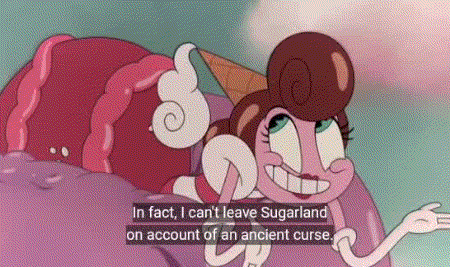
This series is fun and life hearted, made for all audiences, there's a lack of real drama yet it manages to not be shallow as we have focus and interactions matter, it is ultimately about Cuphead and the devil, the masses of colour characters we may meet along the way are a fun bonus to and the formula doesn't change, this person brings drama, that's that, now how do they get out of it.
Timing is arguably a major issue with Hazbin, with a big ensemble cast, drama and various plots, it will need a lot of time to cover all that it started, these things being numerous additions to the original story, most of these additions being a whole host of new characters who ultimately don't achieve anything not for lack of trying.
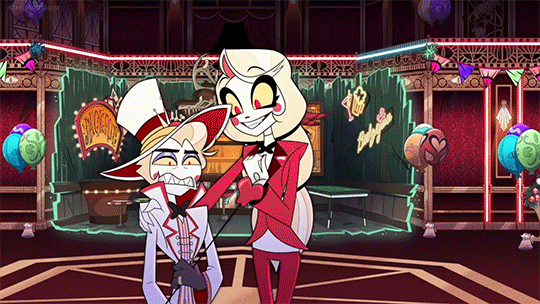
Like its spinoff, this series is big on aquitting those who are there to be liked of their responsibilities and actions, handing blame to someone don't know or have been guided to not like. This strips them of content and growth while makeing their power and influence questionable.
Planning ahead
Rumor has it that The Cuphead show was a complete work of 36 episoses that and broke up into 3 seasons by the big famous platform it's on, to be honest it shows, it is very linear.
Really though, this serves the broadcaster because would keep it in the algorithm longer giving it more time to gain more traction which means more money for the broadcaster and make it look like they're good at renewing projects when this may not entirely be the case.

Releasing the story broken up may have done this show a big disservice as many disappointed reviews were based on how much it deviated from the games and seeming censored, these may not have been concluded had all episodes been released, showing it being to return to its roots by the end.
Still, atleast the story was always going to be told.
As controversial as that situation is, Hazbin too could do with mapping out the beginning, middle and end with a clear and concise story, one with heart that answers questions, balances it's drama, action and comedy and shines some spotlight onto the stories that really need telling. They could do with this already being done or at the very least wrapping up seasons with what we were sold on being relevant.
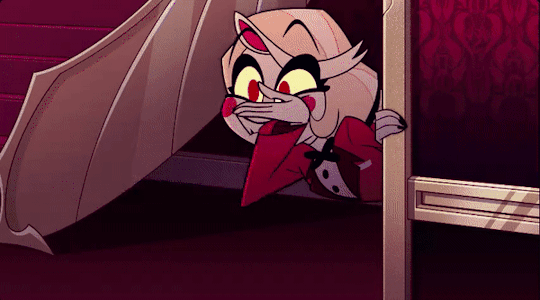
Planning is well and good but ideas need to be prioritized and coherent. If multiple seasons are planned, this show will need to crack down in order to guarantee them.
#the cuphead show#hazbin hotel critical#hazbin hotel lucifer#ensemble cast#The cuphead show devil#hazbin hotel charlie
43 notes
·
View notes
Photo
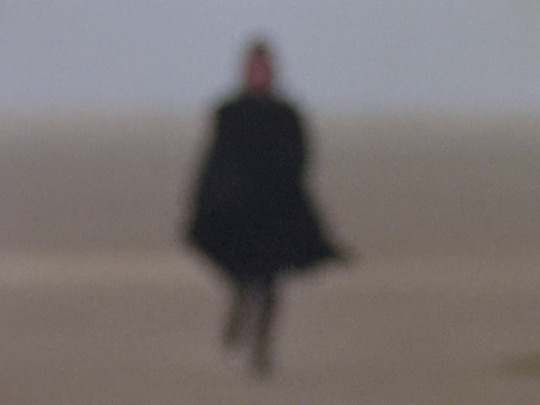
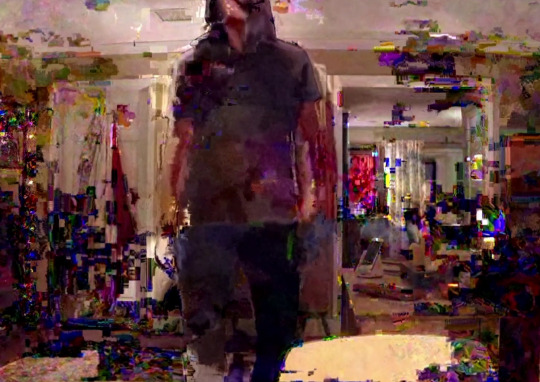
A Warning to the Curious (Lawrence Gordon Clark, 1972)
Unfriended: Dark Web (Stephen Susco, 2018)
“The template for the perfect scary story is pretty much set in stone, and it’s unlikely that any technological advancement is going to change that. The ghost tales devised by the Victorian writer M.R. James at the beginning of the 20th century will remain the bedrock for the genre as we know it. [...] [H]e alighted upon and would consistently return to a basic, endlessly reproducible scenario: an antiquarian or scholar, usually fusty, male, and set in his ways, comes into possession of a relic, manuscript or other object of mysterious provenance and great interest, and this item turns out in some way to be haunted and/or coveted by the being who once owned it. [...]
One of the few recent horror movies that gave me the particularly Jamesian pit-of-stomach dread that comes from peeking a little too far below the surface of our seemingly safe everyday existence is 2018’s Unfriended: Dark Web, Stephen Susco’s rigorously conceived sequel to the also impressive yet more predictably moralizing Unfriended (2014). It’s perhaps a film that few would upon first glance consider classical or elegantly shaped, yet Dark Web’s ruthless exploitation of contemporary fears—of losing one’s identity, of being found out, of making one wrong misstep that has everlasting consequences—are firmly rooted in the scary story template. In “Oh Whistle,” the young professor Perkins absconds with an ancient, hieroglyphic-laden whistle he discovers buried in the sand amongst the groynes of a coastal town in eastern England; he later makes the mistake of blowing it. In Unfriended: Dark Web, our ostensible hero Matias (Colin Woodell), pilfers a laptop from a coffee house’s lost and found; it’s not as magical as the strange artifact buried on a rocky shore, but it’s useful for his purposes, and, like Perkins, he definitely should have left it where found it.
As in the classic ghost story, the owners of the object are coming back to claim it—in this case black-hooded figures who might be real, but who appear as staticky, pixellated manifestations of otherworldly evil. Or perhaps underworldly evil: as the title implies, this thing goes deep, man, all the way down to the heavily encrypted world of darknet that has inspired countless contemporary urban legends, here envisioned as a journey to Hades by rowboat, animated with rudimentary, Atari-era graphics. As though they’ve been hit with a fatal computer virus, all of his friends—who have gathered in their respective spaces to partake of “game night”—also are, in a sense, infected by association. The film’s logic is like a less literal Ringu: as soon as one sees the horrifying images, there’s no way back. The excavations of the dark web are essentially files buried deep within our collective subconscious.” — Michael Koresky, A Few Great Pumpkins XIV
#i HAD to make up for my lack of unfriended posts#this is what my brain looks like if u care etc#a warning to the curious#unfriended: dark web#stephen susco#horror#caps#comparatives#w*#found footage
46 notes
·
View notes
Text
Book Review: The Most Notorious "Talker" #3
The Most Notorious "Talker" Runs the World's Greatest Clan #3 by Jaki, Fame

adventure
fantasy
magic
swords and sorcery
My rating: 5 of 5 stars
Lush character development. Competitive combat initiatives. Subtle yet sumptuous narrative twists. For the readers who stuck with this novel series, THE MOST NOTORIOUS TALKER RUNS THE WORLD'S GREATEST CLAN v3 is a strong volume. The book is devoted entirely to defining and expanding the characters who constitute this chaotic fantasy realm, exposing their limitations and daring them to take one step beyond every known disadvantage before them. For Noel Stollen and his clan, Wild Tempest, that means baiting the most powerful fighters on the continent and drawing the attention of the most savage warriors around.
THE MOST NOTORIOUS TALKER…v3 has action, character growth, and a delightful twist or two, but what makes this book so engaging is its deliberate pivot from player-versus-monster combat toward player-versus-player combat, to use more colloquial verbiage. Enough charging into staged and planned battles against enormous creatures with otherworldly powers. It's time to demand these egotistical humans measure themselves more fully, against one another, with the very weapons and guile they claim make them the best of the best.
Wild Tempest is solid, but it's still just a notorious clan, not a regalia. Noel seeks to change that. His team's hope rests in its capacity to defraud and sunder a third-tier regalia, take its place, and take the empire's lead against the coming Valiant. It's not a bad idea. Just an insane one. The regalia Lorelai has big plans, and is obviously stowing its money and power for future gains. If Noel is to topple the group's lead fighters, who wield mysterious abilities and hoard traitorous pasts worthy of rumor, then he's going to need something more than the blood of the average seeker running through his veins.
The novel's emphasis on character development is patient and well-measured. The shifts in narrative point of view are better managed here than in previous volumes, and the balance in the types of characters for which these shifts occur is more valuable, given the direction the story takes. In other words, readers encounter the lives and experiences of characters with a stake in the game. THE MOST NOTORIOUS TALKER…v3 doesn't mess around. An apolitical clan master hoping to assail her boredom and avoid getting caught in the crossfire? An overly heroic vice-master who realizes he's worthless if he doesn't push himself to the brink to stand up for his comrades? A man in exile, shielding his heart from an abusive past, who detests the necessity of every blasted fighter hiding a "secret weapon" of some kind? An assassin in a foreign land, on death's door, longing to see her young daughter reach womanhood?
Agency. This novel is about characters whose lives are invariably blood-stained, but who choose to find a path (or fight for a path) that might somehow, one day, prove worth dying for. Noel accelerates his progress toward becoming the world's strongest seeker through dangerous means that threaten to rend his body apart. His vice-master, Leon, finally steps into his own, and even goes so far as to invent a new skill in the heat of a raucous battle. Alma, quiet for much of the novel, vows to prove her worth against an enemy whose legendary, multi-pronged attack threatens to kill her in an instant.
Elsewhere, secondary and tertiary characters make their move. And it's a doozy. Notable among them is the once-repelled but now inexplicably returned Malebolge the Chaotic, the eight generation Valiant. Whether Malebolge's alliance with the Lord of Flies spells doom for Wild Tempest is unknown. But one thing is for certain: No matter how incredible the multiclass combat, no matter how dark the otherworld alliances, and no matter how insidious the schemes to undercut and exploit them all, the consequences are real.
❯ ❯ Light-Novel Reviews || ahb writes on Good Reads
#light novel#review#notorious talker#5 of 5 stars#goodreads#wild tempest#regalia#character development#combat initiative#narrative twist#otherworldly power#malebolge the chaotic#multiclass combat
1 note
·
View note
Text

zap zap! i levelled her to 25 in boreal woods for a challenge, and that's also how i feel about it.
#dragons#fr art#frfanart#fr tundra#neon#eyes#flight rising#flight rising tundra#fr art share#crowart#in her lore she can see the different outcomes of the world if action is (not) and how is taken#it's not rly written down well but the Vzone lore boils down to#a magic portal (forbidden portal venue!) is discovered in a small and distant town#the excess magic from the portal is a great source of profit/energy/magic for the society#kinda just threw the Shit i was feeling when studying for ecology at a dragon#but the exploitation of otherworldly magic comes with consequences#some of the consequences are just really weird looking#some of the consequences will literally tear the world apart#she's seeing different outcomes. the graphs all blur.#the lines refer to how the predictions on whether or not we meet the goals and#which we do or do not will influence how well we can predict the outcomes#and the error margins sure do grow!#damn if you read all of my rambling ...props to you#pop off my liege#thanks dont rearrange my tags tumblr
129 notes
·
View notes
Text
How to Play as Joker in DnD 5e

I recently bought Persona 5 and just finished the first mind palace and my god is this game a metric fuck ton of awesome, colorful, and stylish. So, while i haven’t finished the game, I’m excited to figure out his DnD build. Normally, because Joker has a canon Persona, I would use Arsene to determine Joker’s magical abilities. But Arsene stops learning new abilities at a pitiful level 7. So, for everything else, we’ll have to look at his confidant abilities and try to make whatever connections that we can.

The Rebellious Spirit Within
Whether you address your dirty crime boy as Ren Amamiya or Akira Kusuru, it’s evident that he’s a human. However, not even other humans can do what Joker can do. So, he could absolutely be considered a Variant Human. As a Variant Human, we’ll pick up Dexterity and Charisma, along with Persuasion proficiency so you can convince your enemies to join your rag-tag group of plucky teen felons. So, what might you consider for his bonus feat as a Variant Human? Top picks would include: Dungeon Delver so you can run through mind palaces, avoid traps, and be a perceptive thief. Skulker so that you can hide in partial darkness and make ranged attacks without giving away your location. Lucky to give yourself some good old fashioned anime protagonist plot armor. Mobile so that you can outrun security and the consequences of your actions. Magic Initiate so that you can be even more of a thief by stealing from other spell lists. Inspiring Leader so that you can yell at your friends to git gud. Prodigy so you can become even more of a specialized skill monkey. And Skilled so that you can horde all the talent for yourself.
You fragrantly break the law and play the role as a Phantom Thief to take down corrupt authority figures. You are the definition of Chaotic Good.
Joker’s role as a thief of corrupt hearts lends itself to a few Background options. Urban Bounty Hunter fulfills the idea of Joker having a target that he hunts down. Criminal is an option if you want to lean into the Thief angle, plus the framing device of the story has Joker telling the story during a police interrogation, so clearly Criminal isn’t that far off the mark. Charlatan is a loose fit as it’s more of a con artist, but the Secret Identity feature works well as Joker is a second identity. The secret identity also appears for the Dimir Operative from the Guilds of Ravnica book, though while it is on DnDBeyond, that doesn’t guarantee that every DM will allow it, especially since this Background has built-in spells. The Urchin Background loosely fits as Joker’s family has given up on him and sent him off to be raised by someone who is an utter stranger, and finding your way around Shibuya and the mind palaces is kind of important. The Faceless background lets you throw your old life away and begin anew as someone else, and the Faction Agent makes you part of a secret society, such as the Phantom Thieves.
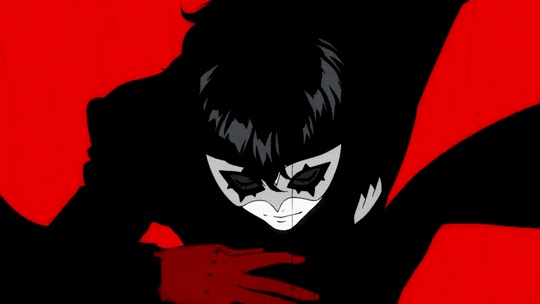
Arsene the Fool Arcana
Arsene, like all primary personas, first appears in a flash of blue flames. His only two damaging spells include Eiha which is a little bolt of dark flames that deals Curse damage, and Dream Needle, which deals psychic damage and has a chance of putting enemies to sleep. Arsene is seen with chains but doesn’t use them, and in Smash, having Arsene changes Joker’s up special from a grabbling hook to being launched by Arsene’s wings, which could allow Joker to learn Fly. Beyond that, everything else depends on Confidant abilities and the general magical damage types found in the game.
Personas can deal Fire, Ice, Lightning, Wind, Psychic, Nuclear, Bless, & Curse damage. Nuclear, Bless, and Curse are a little less clear, but I’d translate those to being Poison, Radiant, and Necrotic spells.

Collecting Your Jar of Hearts
BARD
Whispers: While Joker is not inherently a creative person, the bard’s ability to steal from other spell lists could be re-skinned as part of Joker’s interchangeable Personas. Whisper Bards also deal damage with psychic blades, which is fitting because all of Joker’s thievery is more metaphorical, and all the fighting happens in the minds and hearts of corrupted people. So, his blades dealing Psychic damage is rather fitting since he’s literally fighting the demons in people’s minds and hearts. Also, the Bard’s Jack of All Trades would do well to make you a Wunderkind that’s kind of great at everything.
FIGHTER
Battle Master: While the Aid Spell is one of many that can do well for teamwork, there are some Maneuvers that actually focus on rallying allies to attack a single target or get into a formation, which is fitting for Joker as it’s often him who instigates the team’s ability to pull off an all-out attack.
RANGER
Gloom Stalker: Change a crossbow into Joker’s toy guns that shoot placebo bullets, and take advantage of this subclass' ambush ability and you’re going to do really well copying Joker’s ability to ambush shadows in the game. Ranger also comes with a new feature option called Canny that lets you get another extra proficiency you don’t already have and turn it into an expertise.
ROGUE
Assassin: Along with Gloom Stalker, these two subclasses combined will make ambushes way more effective when dealing with enemy shadows.
Inquisitive: You’re better at figuring out enemy weaknesses and then exploiting them. Provides a nice boost to Sneak Attack damage at higher levels.
Mastermind: This lets you Help an ally as a bonus action, and tells you when an enemy is too strong for you to fight.
Soul Knife: Technically, you’re more of a thief in a metaphorical sense. You’re attacking people’s minds and hearts, so this subclass who is more focused on attacking people’s minds goes right along with that.
Thief: They’re called the Phantom THIEVES. It had to at least be considered.
WARLOCK
Archfey: Since Demons are a specific kind of Persona, Archfey feels the most all-encompassing for this otherworldly pact. Whether you work it as the pact made with Igor or with Arsene himself, it’s obvious that Warlock had to be part of it, as the Phantom Thieves literally say that they make a pact with their Persona. It’s practically spelled out that Phantom Thieves are warlocks.

Stats and Proficiencies
You wouldn’t be a very good thief without a maxed out Dexterity. You’ll also need Charisma so you can manifest your feelings for magic and a decent Wisdom score so you can multi-class as a Ranger to optimize the use of your gun. Constitution will keep you from dying, Strength should be at least neutral, but if it gets left behind, pick up a proficiency with Athletics and it’ll be fine since you swing with Dexterity anyway. Even though Intelligence is a stat in Persona 5, it won’t really help you much here. So, it’s the dump stat for this build. You’re just a debonair ignorant pretty boy.
Acrobatics
Athletics
Insight
Investigation
Perception
Persuasion
Stealth
Sleight of Hand

Name: Joker (Ren Amamiya or Akira Kusuru)
Race: Variant Human
Background: Urban Bounty Hunter
Alignment: Chaotic Good
Class: Assassin Rogue (8)
Archfey Warlock (4)
Gloomstalker Ranger (4)
Battle Master Fighter (4)
Base Stats:
Strength: 8 (-1)
Dexterity: 20 (+5)
Constitution: 14 (+2)
Intelligence: 8 (-1)
Wisdom: 14 (+2)
Charisma: 18 (+4)
Saving Throws:
Strength: -1
Dexterity: +11
Constitution: +2
Intelligence:+5
Wisdom: +2
Charisma: +4
Combat Stats:
HP: 151
AC: 16
Speed: 30
Initiative: +7
Proficiency Bonus: +6
Passive Perception: 24
Dark Vision: 60 feet
Proficiencies and Expertise:
Acrobatics (Rogue)
Athletics (Ranger: Canny Feature)
Deception (Rogue)
Insight (Urban Bounty Hunter)
Investigation (Ranger)
Perception (Rogue)
Persuasion (Variant Human)
Sleight of Hand (Rogue)
Stealth (Urban Bounty Hunter)
Skills:
Acrobatics: +17 Medicine: +2
Animal Handling: +2 Nature: -1
Arcana: -1 Perception: +14
Athletics: +11 Performance: +4
Deception: +4 Persuasion: +10
History: -1 Religion: -1
Insight: +8 Sleight of Hand: +11
Intimidation: +4 Stealth: +17
Investigation:+11 Survival: +2
Spell Slots
1st (3)
2nd (2)
Joker’s Spellbook
Cantrips 1st Level 2ndLevel
Eldritch Blast Cure Wounds Phantasmal Force
Friends Detect Magic Shadow Blade
Mind Sliver Disguise Self
Expeditious Retreat
Hex
Hunter’s Mark
Sleep
Actions:
Action Surge: Take an extra action once per rest.
Primeval Awareness: Spend X spell slot, find creature types within 1 mile for X minutes.
Bonus Actions:
Cunning Action: Aim, Dash, Disengage, or Hide once per turn.
Second Wind: Regain 1d10 + 4 HP once per rest.
Reactions:
Uncanny Dodge: Reduce damage from enemies you can see that hit you.
Features:
Assassinate: You have advantage on slower foes, all hits are critical.
Battle Maneuvers:
Commander’s Strike: Pass your turn to a friendly creature, add superiority die.
Maneuvering Attack: If you hit, an ally can move without provoking an attack.
Rally: Heal an ally by a superiority die + 4.
Dread Ambusher: Make an extra attack on the first round, +1d8 damage on hit.
Dungeon Delver: Add 2x your CON mod to healing, advantage on perception and investigation to find hidden doorways, advantage on saving throws against traps, resist trap damage, and search for traps at a walking pace.
Ear To the Ground: You have a covert network of intelligence.
Eldritch Invocations:
Agonizing Blast: +4 to Eldritch Blast damage.
Improved Pact Weapon: Your pact weapon deals +1 melee damage.
Evasion: Take 0 damage on a successful DEX saving throw.
Favored Enemy: Deal +2 damage to Fey, advantage on tracking Fey creatures.
Fey Presence: Creatures within 10 ft are charmed or frightened for 1 turn.
Fighting Style:
Archery: +2 on attack rolls with ranged weapons.
Dueling: +2 on damage rolls with one handed melee weapons.
Natural Explorer:
Preferred Terrain: Underdark: Advantages in Underdark environments.
Pact Boon:
Pact of the Blade: Summon a Pact Weapon.
Sneak Attack: Deal 4d6 extra damage when advantaged.
Thieves’ Cant: Conceal and decipher hidden meaning in casual conversation
Umbral Sight: 60 feet Darkvision and hidden from creatures with Dark Vision.

This build was a ton of fun to make. How do you feel I did building Joker? Would you build him differently? Who’s your favorite Persona? And are you as upset as I am that you can’t date Ryuji? As always, I take requests, so send me your requests and I might just build yours next.
#dungeons and dragons#joker#persona 5#ren amamiya#akira kusuru#arsene#persona#shibuya#phantom thief#phantom thieves#mind palace#dnd#dnd 5e#5e#5th edition#fifth edition#dnd 5th edition#dnd fifth edition#let me date ryuji
367 notes
·
View notes
Text
Roleplaying and SVRSE
Understanding Roleplaying
What is Roleplaying?
Many times has this question been asked. Is there one true answer? Like many other questions, there is no one answer. Instead, there are many opinions and perspectives of what Roleplay is, or what it is not. These are important, because how we look at roleplaying will determine how we design roleplaying games.
‘Traditional’ Roleplaying
Generally, roleplaying has a character-based perspective. Roleplaying is about becoming another person and living out that person’s life in whatever setting and scenario they are in. In this sense, it is a form of acting. Roleplaying games generally favour fictional settings, with many features far estranged from reality as we know it. For example, things like magical powers, futuristic technology, supernatural phenomena and many otherworldly environments. They may take place in their own unique universe and setting with its own rules.
These kinds of settings tend to encourage a focus on character ‘success’ or ‘failure’. The concept of ‘wish fulfilment’ – of using roleplaying to play out personal fantasies or desires, can influence the approach to both the setting and the interactions with others. This can be fun and engaging; the heroic struggle of a peasant to a noble warrior, for example could be one of triumph against the odds. However, there is also a trend towards playing merciless, egotistic killers; looting everything in sight, solving problems with violence and constantly moving around, looking for trouble.
This kind of approach is possible within the setting of this game setting. However, they will likely have significant implications for gameplay, in the spirit of Homestuck’s parody and subversion of ‘traditional’ roleplaying games.
Roleplaying in SVRSE
Because there are many different styles, approaches and perspectives on roleplaying, SVRSE is designed for some degree of flexibility in mind. This game is geared towards ‘collaborative storytelling’. This perspective is more group-oriented – everyone in the game is helping to craft a sequence of events which gradually forms a narrative of its own. The nature of that story and the highs and lows are a natural product of the action. Roleplaying as ‘collaborative storytelling’ is therefore about the journey, rather than the destination.
It’s okay to fail a test, it’s perfectly fine if something goes horribly, horribly wrong and to suffer along the way. The biggest sin in this style of roleplaying is to be boring. A snore-inducing story is quickly forgotten; it’s the entertaining, gripping, climatic ones that we usually remember. No matter how good or bad.
SVRSE places more emphasis on player-driven action, but it is worth understanding that most games will feature carefully-crafted settings and a large array of rules and conventions which can limit player actions. However, in the spirit of Sburb, there are many ways to exploit these rules, so long as the player is prepared for the potential consequences. Whereas most games feature a single ‘game master’ responsible for dictating the game experience, SVRSE sees this role as a ‘director’ or ‘storyteller’ that pieces together the action and works to develop a coherent and gripping narrative. The level of control they take over the action is best tailored to the players and agreement should be reached on this before playing to ensure roleplaying is done respectfully and coherently.
This approach has some drawbacks. For example, there is a higher expectation of players working together, or at least coming to some agreement on events within the game. Being respectful is necessary for an enjoyable experience. If any player is upset or becoming detached from the story, then the experience will suffer as a result. The director and players should try to work with each other and come to agreement on events in the game. Players should try to avoid excessive attachment and allow their creations to have a life of their own. Despite the name, directors should look to guide rather than lead and allow their plans and setting change alongside the events of the game.
Of course, becoming a villain is always an option and inter-party tension and conflict can greatly enhance the story – again, provided players are comfortable with this approach. However, it is something best treated with moderation. Most characters SHOULD be striving for good in one way or another. Of course, everyone can have a different idea of what ‘good’ means or how to be ‘good’…
Why Roleplay?
There are three simple reasons to explore roleplaying games. The first and foremost, is for personal enjoyment. Second, is to heal. Third, to learn.
Enjoying Roleplay
Humans love playing games. We like to be creative, to think, to explore and to feel new sensations, even ones that might be painful. These are not the only things we can enjoy. We enjoy receiving things from other humans. We like talk, love, admiration, respect, power, and control; even the illusion of these things drives a lot of human society.
Roleplaying allows us to explore and experience many of these things without having to do so in ‘real life’. The illusion of being someone – or something – else can be thrilling and perhaps even intoxicating. However, there is another joy beyond this illusion.
We can also enjoy the stories and events that are created by roleplaying. We can enjoy making friends outside the game. We can enjoy watching the way the characters we create take on a mind of their own and are transformed from their original selves. These are the kinds of collective enjoyment this game strives for.
Healing Through Roleplay
Many things happen during our lives. Some of these things we might find understandable, comprehensible, rational. Of course, there are many times when this is not the case. We cannot ever really hope to see, feel and know everything. These limitations can be painful and traumatic on their own. Uncertainty, helplessness, doubt and fear have driven many people to a fateful and tragic end. There are many ways we can try and plug these holes in our psyche. One way of doing so is to create a special, safe space to explore these feelings. Roleplaying can provide this space.
Like many roleplaying games, SVRSE will often touch upon these elements of life. This is unavoidable, but Players and Authors can and should decide carefully what extent they are comfortable with exploring such dark territory. These emotions lie behind most of the traumatic parts of life and can manifest in many troubling and life-changing ways. While it can be painful, it can also be relieving to be able to talk about and act out such things in a more comfortable environment, protected by the unreal nature of roleplaying.
Learning from Roleplay
Across history, humans have learned in many ways. One of these is by doing – by acting in various ways and discovering through trial and error. Another is by listening to each other or otherwise receiving instruction based on the experiences of others. Over time, these methods have been refined, investigated and expanded into education as we understand it today. One of the discoveries we have made has been in the discovery of the value of simulated experiences. We can learn from things that are not ‘real’, but imagined to be so through the power of our minds.
Roleplaying in the context of games, is the creation of characters, places, events and stories that are ‘fake’. However, our imaginations are bound by the limitations of our minds and of what we can imagine. In this sense, roleplaying is very much like being part of a ‘living’ fictional novel. Like any author, we have sources of inspiration and our creations often reflect our own questions, ideas, concepts and visions. However, unlike a novel, these creations of ours exist in a shared space and interact with those of others.
Roleplaying is in some ways a learning experience and there is a lot we can learn about others – but most distinctly, ourselves – from playing games where creations of our mind intersect with the fruits of another. These discoveries can be incorporated into ‘real life’ and change us in ways we cannot always perceive.
Is Roleplaying Dangerous?
No, and Yes. Roleplaying of itself is only as risky as its content. The dangers of roleplaying mostly stem from the people engaging in it or the conventions of any particular roleplaying game and not the act of roleplaying itself. Where these risks are properly managed, it can be a safe and rewarding experience.
However, there are dangers worth recognising. Fiction reflects reality - who we are, what we do and things we know/believe WILL be reflected in roleplaying. This can be confronting to not just ourselves, but to others and must be considered. This process is not one-way. Just like how a book or a film can make us think or act differently, so too can roleplaying. Many people have remarked on how some aspects of the characters created during roleplaying may become part of one’s personal identity. This can have clear negative consequences for our mental health but can also be mitigated.
The popularity and spread of roleplaying games is indicative of their primarily positive impact on our lives. However, mindfulness about the nature and risks of roleplaying is worthwhile, especially when roleplaying reaches into dangerous territory.
0 notes